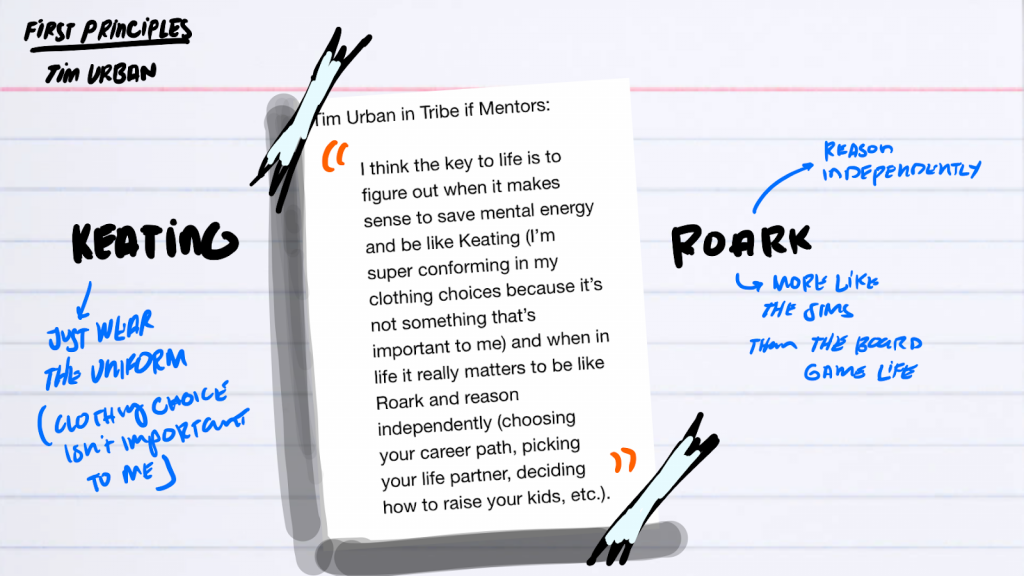I (sort of) wear a uniform.
It’s just roughly the same outfit. I have:
- 2 pairs of khakis
- 2 pairs of black pants
- 2 black sweaters
- 2 gray sweaters
Cold Stone gives you like 372,027 combinations. I can mix and match 4 combinations.
Here’s the trick: don’t tell people you’re doing this. I learned this from a friend. We had worked together for six months and he got a package delivered. He said he was adding it to the repertoire. His third shirt.
Again, we had been working together for six months. I didn’t notice he wore the same two shirts day in, day out. I don’t know if I ever would have noticed until he told me he added a third shirt.
I noticed the same thing. People at the office didn’t notice until I mentioned it. (Another good life lesson: people don’t think about you—and it’s not a bad thing on either end.)
These days people then think you want to be like Steve Jobs if you wear the same outfit. You probably have to wear a suit for the Barack Obama comparison. There’s also Doug Funnie. I had heard of people wearing the same thing every day. I took the plunge (buying 4 of the same outfit) after hearing Jerrod Carmichael talk about it. (I’m also realizing I wrote about this before.)
I was wearing the same… I bought a lot of the same… white sweatshirt, gray pants… Timberlands. Everyday. Every day. It worked in any place that I went. That’s what I liked. It worked everywhere. I’ll go to your wedding in this thing.
I thought it’d be good for willpower and all that. It frees up mental space. Gives some of your decision making power back and all of that.
Tim Urban doesn’t quite wear a uniform, but he talks about being super conforming in clothing choices in Tools of Titans:
I think the key to life is to figure out when it makes sense to save mental energy and be like Keating (I’m super conforming in my clothing choices because it’s not something that’s important to me) and when in life it really matters to be like Roark and reason independently (choosing your career path, picking your life partner, deciding how to raise your kids, etc.).
Okay so I haven’t read The Fountainhead, but here’s a quick look at Keating and Roark from Wikipedia:
The novel’s protagonist, Howard Roark, is an individualistic young architect who designs modernist buildings and refuses to compromise with an architectural establishment unwilling to accept innovation. Roark embodies what Rand believed to be the ideal man, and his struggle reflects Rand’s belief that individualism is superior to collectivism.
Roark is opposed by what he calls “second-handers”, who value conformity over independence and integrity. These include Roark’s former classmate, Peter Keating, who succeeds by following popular styles, but turns to Roark for help with design problems.
You can analyze everything. You can overanalyze everything.
I wish I could remember where I heard that story, but imagine a stadium packed for, well let’s say it’s a high-school football game. You and the facility team can plan and plan and plan and optimize and get everyone out of there after the game in 10 minutes. If you just let people organize this on their own, they’ll get out of there in 15 minutes.
Are you overanalyzing and overplanning something in your life? Maybe it actually is your outfits.
If I was a better thinker, I could now explain the other side of the coin. You’re probably also underanalyzing and accepting defaults for important life choices. I’ll write about that in the future, but for now I’ll just say you should check out Tim Urban’s latest post: How to Pick a Career (That Actually Fits You).
I’m gonna go put my uniform on.
